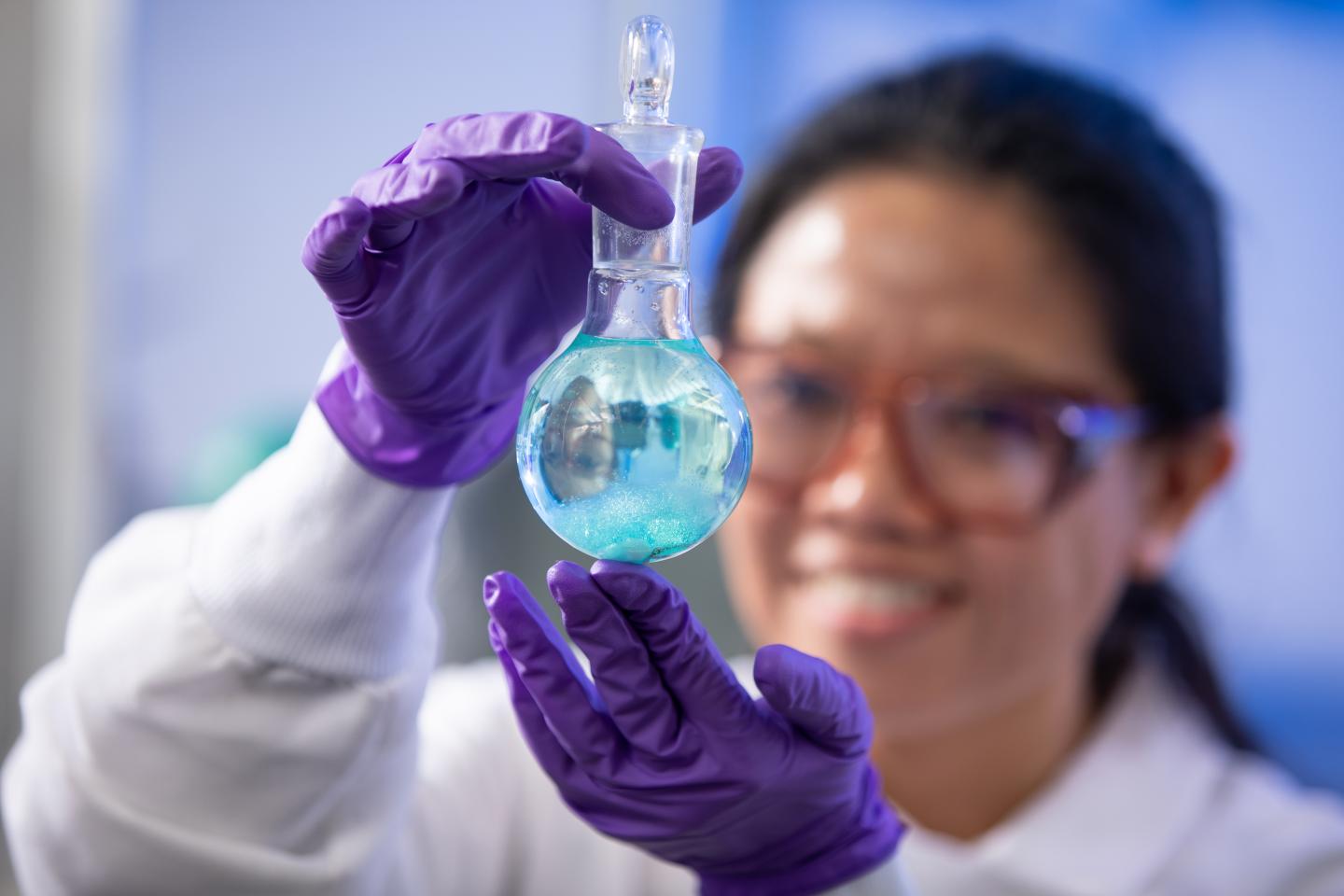Membranes that separate carbon dioxide from other emissions could help slow the pace of climate change

Credit: Douglas Levere / University at Buffalo
BUFFALO, N.Y. — Imagine if you could capture large amounts of carbon dioxide before it left the smokestacks of coal-fired power plants, cement plants, steel plants and other industrial facilities.
Such an advance could reduce carbon emissions worldwide, helping to slow the pace of global warming.
With these goals in mind, University at Buffalo researchers are leading a multi-institution project to develop materials called membranes that can separate carbon dioxide (CO2) from other gases — a technology that factories and power plants could easily install to cut down the amount of carbon they release.
UB team members have received $1.8 million in new funding, including $1.2 million from the U.S. Department of Energy (DOE) and $600,000 from Empire State Development’s Division of Science, Technology and Innovation (NYSTAR).
Eventually, the team’s products will be tested at the National Carbon Capture Center, a DOE-sponsored research facility in Alabama.
“Carbon capture technology has the potential to make a huge impact right away when it comes to carbon emissions,” said Haiqing Lin, PhD, associate professor of chemical and biological engineering in the UB School of Engineering and Applied Sciences. “Solar and wind are great, but it will take time for the world to increase capacity in these areas, and in the meantime, we are still burning fossil fuels. Cement plants and steel furnaces also produce a lot of CO2, and carbon capture technologies can help reduce these emissions as well.”
Lin is leading the research, with Timothy Cook, PhD, assistant professor of chemistry in the UB College of Arts and Sciences, serving as co-principal investigator. The two have worked on a number of interdisciplinary projects together, beginning with a study funded by a UB Innovative Micro-Programs Accelerating Collaboration in Themes (IMPACT) award.
The team developing the new carbon capture membrane also includes scientists from the California Institute of Technology, Rensselaer Polytechnic Institute, Membrane Technology and Research Inc. and Trimeric Corporation, with funding for all collaborators totaling $3.8 million.
An ‘add-on’ technology for existing facilities
The membrane the researchers are designing will consist of thin sheets of flexible polymers. These polymers will be outfitted with special chemical features that bind to carbon dioxide, helping to draw the gas in. In addition, the polymers will be laced with carbon-friendly metal-organic cages that act as conduits, allowing CO2 to selectively flow through the materials faster.
The goal is to create a cost-effective membrane that removes about 90 percent of the carbon dioxide from coal-fired power plant emissions while trapping minimal quantities of other gases such as nitrogen. If successful, the new material will outperform current leading membranes by 50 to 100 percent, working toward the DOE target of reducing the cost of capturing CO2 to less than $30 per ton for coal-derived flue gas, Lin says.
“The appeal of this technology is that it’s an add-on technology — you can install it in power plants and factories as they are today, without having to make major changes to the way they operate,” Cook says.
New plastics and other potential future uses for captured carbon
Carbon capture technology is in use in some parts of the world today, and much of the CO2 from these projects is injected into oil wells to enhance their productivity. Storing carbon dioxide deep underground is another oft-discussed possibility.
But Cook sees additional potential for captured carbon.
His lab is developing catalysts that could help transform carbon dioxide into compounds including carbon monoxide, which could then be used to synthesize products including plastic. One benefit to this process is that it would reduce society’s reliance on natural fossil fuels as the raw material for creating plastic.
In the future, carbon dioxide could also theoretically be used to make new fuels, which could be burned in power plants or vehicles equipped with carbon capture systems, Cook says.
“If you could burn gas, capture the CO2 before it gets in the atmosphere, and then turn the captured CO2 into new fuel, you would be closing the carbon cycle,” he says.
The development of better technologies for separating carbon dioxide from other gases is a step toward such futuristic innovations.
“The idea that we can potentially take CO2 and use it as a building block to create new materials is exciting,” Cook says. “It’s a major area of interest among researchers. But to do that in a cost-effective manner, you need high concentrations of CO2. The carbon capture technology we’re working on is going to capture CO2 before it leaves the power plant, which is going to be much more efficient than trying to remove it from the atmosphere, where it’s much more diluted.”
###
Media Contact
Charlotte Hsu
[email protected]
Original Source
http://www.




